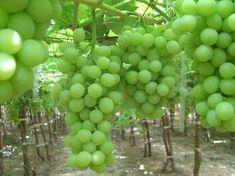
Spanish grapes have been starting their season a little later than usual as Egypt has carved out more of a presence for itself on the UK market this year. There are still small volumes of Egyptian grape coming forward pushing the start of the Spanish season back, but more significantly quality from the Murcia region has been very variable. The result is a tighter quality control operation at source, especially on Sugraone, importers report. Some importers report weather problems having an effect or stressed vines following a good quality harvest last year.
Meanwhile, Egyptian arrivals are tailing off as the preferential duty period gives way to higher duty rates this weekend.
Italian volumes are just coming on stream and Puglia and Basilicata started harvesting last week. Apofruit, one of the largest co-operatives producing in the regions forecasts a good crop of some 4,500 tonnes this season, in line with last year’s volumes. The co-op reports larger volumes of seedless fruit and organic production with Italia and Vittoria the dominant varieties.
Italian fruit will continue to arrive into August before UK market preference switches onto Greek Thompson Seedless, importers indicate.
The Greek season traditionally gives way to California in the late autumn and this season the state’s grape growers are forecasting a decline on last year’s record-beating season. The US National Agricultural Statistics Service (NASS) is predicting a 14 per cent reduction in the total crop of wine, table and raisin grapes because of inclement winter and spring conditions.
However, some grower groups say that the overall crop is like to be in line with the average for the last 10 years.
The expected table grape production on 83,000 acres is 750,000 tons, 13 per cent less than 2005.
A mild winter advanced the Central Valley grape crop, but the cool temperatures in March and April brought vine growth and development to a standstill. Warmer temperatures in late May and June allowed the vines to catch up and crop development reported in July is only a few days behind in the Central Valley, according to NASS.



